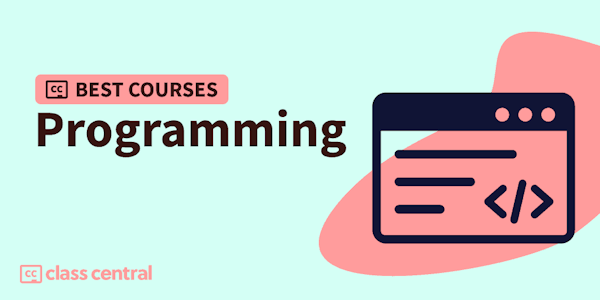Learn the fundamentals of C programming language through a comprehensive course that progresses from basic concepts to advanced topics. Master essential programming concepts including data types, control structures, arrays, functions, pointers, and file operations while building a practical student information management system. Develop strong debugging skills, understand memory management, and practice with sorting and searching algorithms. Explore structured programming through hands-on exercises covering character arrays, recursive functions, dynamic memory allocation, and file handling operations. Gain practical experience with branching and looping structures, operator precedence, and logical operations while implementing various modules of the student management system case study.
Overview
Syllabus
- 第1章 C语言概述
- 1.1 为什么要学习C语言
- 1.2 简单的C语言程序
- 1.3 学生信息管理系统案例简介
- 1.4 C语言程序的上机过程
- 1.5 C语言程序的调试方法
- 第2章 数据类型
- 2.1 字符型数据
- 2.2 一维数组的基本概念
- 2.3 案例中学生结构体的定义和使用
- 2.4 数据类型转换
- 第3章 分支结构程序设计
- 3.1 关系运算符及其表达式
- 3.2 逻辑运算符及其表达式
- 3.3 if语句
- 3.4 switch语句
- 3.5 运算符的优先级和结合方向
- 3.6 案例中的分支结构程序设计
- 第4章 循环结构程序设计
- 4.1 while语句
- 4.2 do-while语句
- 4.3 for语句
- 4.4 break语句
- 4.5 循环语句的嵌套
- 4.6 逻辑推理程序设计实例
- 4.7 案例分析与实现
- 第5章 数组
- 5.1 一维数组的应用举例
- 5.2 二维数组
- 5.3 一维字符数组
- 5.4 排序算法
- 5.5 查找算法
- 5.6 案例中统计和排序功能模块的实现
- 第6章 函数
- 6.1 函数的定义、调用和声明
- 6.2 函数的应用举例
- 6.3 函数的递归调用
- 6.4 数组作为函数参数
- 6.5 变量的作用域
- 6.6 变量的存储
- 6.7 案例分析与实现
- 第7章 指针
- 7.1 指针概述
- 7.2 指向一维数组的指针
- 7.3 指向结构体的指针
- 7.4 返回指针的函数
- 7.5 动态内存分配
- 7.6 案例分析与实现(上)
- 7.7 案例分析与实现(下)
- 第8章 文件
- 8.1 文件的基本知识
- 8.2 文件的读写操作
- 8.3 案例中的文件操作
- 第9章 编译预处理
- 期末考试
Taught by
Gong Bencan


